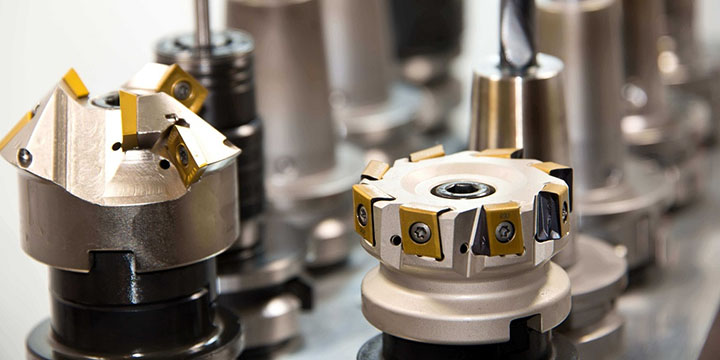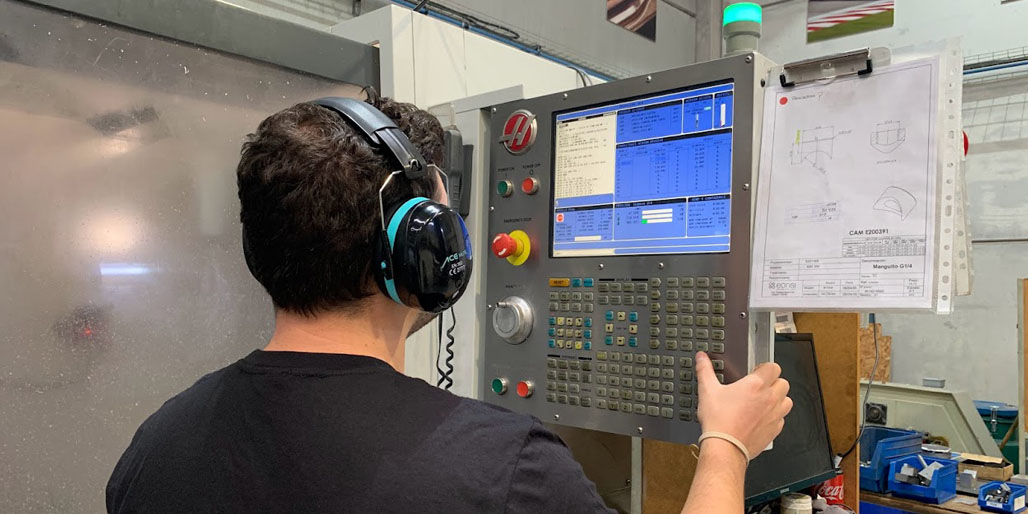Medical device, automobile, and aerospace industries all depend on CNC machines to produce high-precision parts. CNC programs control machine movements, paths, speeds, and tooling. It is essential to optimize these programs in order to increase productivity, cut down on manufacturing time, and eliminate waste.
In this article, we’ll look at the main tactics for making CNC programs as efficient as possible.
Streamline Tool Paths
Efficient CNC programming starts with creating streamlined tool paths that minimize unnecessary movements. Every movement of the CNC machine should serve a specific purpose, whether it’s cutting, drilling, or repositioning. Unnecessary or overly complex tool paths can increase CNC machining time, wear out tools faster, and result in poor surface finishes.
How to Optimize Tool Paths
- Use the Shortest Path Possible: Program the machine to take the most direct route between cuts. As a result, the machine’s moving parts experience less wear and tear, and travel time is reduced.
- Minimize Retracts: Avoid excessive retracts and repositioning unless necessary. Keeping the tool in contact with the material as much as possible increases cutting efficiency.
- Use Climb Milling: When appropriate, replace conventional milling with climb milling. Climb milling lowers the cutting force on the tool, extending its life and improving surface smoothness.
Select the Right Cutting Tools and Parameters

Tool selection and cutting parameters significantly impact the efficiency of CNC programs. Using the wrong tool or incorrect parameters can result in slower machining, poor surface finishes, and excessive tool wear. Selecting the right cutting tool for the material and machining operation is critical to optimizing CNC performance.
Key Considerations
- Tool Material: Choose cutting tools made from materials appropriate for the workpiece material (e.g., carbide tools for hard metals and high-speed steel for softer materials).
- Tool Geometry: Select tools with the right geometry, such as sharpness and coating, that match the machining operation (CNC milling, CNC drilling, etc.).
- Feeds and Speeds: Take into account the material and tool being used while setting feed rates and spindle speeds. Using optimal speeds and feeds ensures efficient material removal without overloading the machine or damaging the tool.
How to Optimize Cutting Parameters
- Follow Manufacturer’s Guidelines: Cutting tool manufacturers provide recommended feeds and speeds for different materials and operations. Adhering to these guidelines helps improve tool life and machining performance.
- Adjust for Depth of Cut: Deeper cuts may require slower feed rates, while lighter cuts allow for faster speeds. Tailoring parameters to each cut optimizes efficiency.
Implement Adaptive Machining Strategies
Using real-time data about the workpiece and tool conditions, adaptive machining strategies modify the machine’s feed rate and cutting settings. These strategies allow for dynamic changes during the machining process, which helps maximize material removal rates while maintaining quality and tool life.
Benefits of Adaptive Machining
- Increased Material Removal: Adaptive machining can automatically adjust feed rates for optimal cutting, removing more material in less time.
- Reduced Tool Wear: By dynamically adjusting cutting forces, adaptive machining helps prevent overloading the tool, extending its lifespan.
- Enhanced Accuracy: Continuous monitoring and adjustments ensure consistent accuracy and quality in the finished part.
How to Implement Adaptive Machining
- Utilize CNC Software: Most modern CNC software includes adaptive machining options that allow for real-time adjustments. Leveraging these tools helps automate optimization.
- Monitor Machine Feedback: Use sensors and feedback mechanisms to monitor tool and machine performance. This data can be used to make informed adjustments during the process.
Optimize Tool Changes and Setup Times
While CNC machines can run autonomously, setup times and tool changes can still affect overall efficiency. Reducing the time spent on setups and tool changes can lead to significant gains in productivity, especially in high-volume production.
Ways to Cut Down on Tool Change and Setup Time
- Employ Multi-Tool Holders: These holders enable automatic tool changes without requiring the machine to be stopped. Programming the machine to switch between tools seamlessly reduces downtime between operations.
- Standardize Setup Procedures: Develop standardized setup procedures that can be followed consistently to minimize setup time. Pre-setting tools and fixtures also ensure that the machine is ready to go with minimal delay.
- Group Similar Operations: Organize CNC programs to group similar operations together. This reduces the number of tool changes required, as the machine can complete all operations with a single tool before switching to the next one.
Reduce Waste and Rework
Waste and rework are two factors that can greatly diminish CNC programming efficiency. If parts need to be scrapped or re-machined due to errors or poor surface finishes, it wastes time, materials, and resources. Optimizing CNC programs to reduce errors and improve accuracy is crucial for minimizing waste and rework.
Ways to Reduce Waste and Rework
- Run Simulations: Before running a CNC program on the actual machine, simulate the program using CAM software. Simulations allow you to identify potential issues such as tool collisions, incorrect tool paths, or programming errors, reducing the risk of mistakes.
- Perform Test Runs: Conduct test runs on a small batch of material to ensure the program runs smoothly before starting full-scale production.
- Monitor Tool Wear: Frequently check tools for wear and replace them when required. Worn-out tools can cause poor cuts, leading to parts that require rework or scrapping.
Keep the CNC Machine Well-Maintained
A well-maintained CNC machine performs more efficiently and accurately. Frequent maintenance keeps the machine operating at its best and lowers the possibility of errors or breakdowns that could cause production to lag.
Tips for Maintaining CNC Equipment
- Regular Calibration: To preserve accuracy in cuts and motions, make sure the machine is calibrated correctly.
- Clean the Machine: Remove chips and debris that can interfere with the machine’s operation and damage sensitive components.
- Lubricate Moving Parts: Keep the machine’s moving parts lubricated to reduce friction and wear on components, which can lead to performance degradation over time.





Leave a Reply